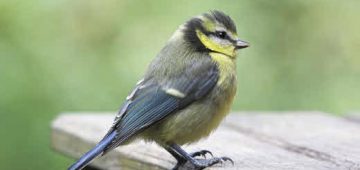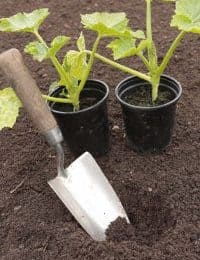
First Steps
Follow the advice below to begin attracting wildlife to your garden.
Small changes can make a tremendous difference to the amount of wildlife attracted into your garden. For instance, by incorporating plants carrying scented flowers, seeds and berries (especially native plants) you will attract more birds, bees, butterflies, and many other desirable animals, and predatory insects, such as ladybirds. Butterflies, moths and songbirds feed mainly on nectar, pollen and seed. Bees too are attracted by nectar.
You can incorporate ‘food’ plants throughout the garden or perhaps plan a ‘service station border’ which contains a mixture of flowering and fruiting shrubs, herbaceous perennials and colourful bedding plants, all chosen to provide food for wildlife.
The following list shows some of the most successful border flowers and shrubs offering pollen, nectar and seeds, but remember that wildflowers can be important too. These are extremely good at attracting wild creatures and most nurseries now sell seeds.
Wildflowers which are particularly good as a source of nectar or seeds include: lesser burdock (Articum minus), hemp agrimony (Eupatorium cannabinum), field scabious (Knautia arvensis), foxglove (Digitalis purpurea), woody nightshade (Solanum dulcamara), wild thyme (Thymus serpyllum), betony (Stachys officinalis), hedge woundwort (Stachys sylvatica).
Garden plants to look out for include: Christmas rose (Helleborus niger), winter aconite (Earanthus hyemalis), elephant’s ears (Bergenia cordifolia), anenome (Anenome blanda), polyanthus (Primula vulgaris elatior), honesty (Lunaria biennis), sweet rocket (Hesperis matronalis), forget-me-not (Myosotis spp.), leopard’s bane (Doronicum pardalianches), sweet william (Dianthus barbatus), shasta daisy (Chrysanthemum maximum), cranesbill (Geranium spp.), sweet bergamot (Monarda didyma), oriental poppy (Papaver orentiale), valerian (Centranthus ruber), angelica (Angelica archangelica), lovage (Levesticum officinale), yarrow (Achillea filipendulina), hollyhock (Alcea rosa), snapdragon (Antirrhinum majus), teasel (Dipsacus fullonum), mint (Mentha rotundifolia), meadow saffron (Colchium autumnale).
Shrubs to look out for include: Buddleia (Buddleja spp.), Chaenomeles japonica, Pyracantha coccinea, Amelanchier canadensis, Cotoneaster frigida, Viburnum tinus, Viburnum bodnantense, Mahonia spp., Cytisus scoparius (broom), shrub roses of all kinds.
In addition, where possible incorporate native species, as these are particularly attractive to our native insects and birds.
Providing a Year-round Supply of Food
Select a wide range of plants that can supply different types of food throughout the year. The following guidelines will help you to maximise the amount of pollen and nectar available in your garden:
[custom_list type=”dot”]
-
- plant a range of species that flower at different times of the year;
- include some early flowering plants, as early spring is a critical time for many insects;
- include plenty of species where the nectar and pollen is available near the surface of the flower;
- select simple flowers where the pollen and nectar are easy for insect visitors to reach – avoid double flowers and others that are difficult for insects to tackle. Also be aware that some garden flowers are sterile.
When is a Weed not a Weed?
Successful wildlife gardening on a larger scale may require you to rethink your ideas on weeds – many weeds are, in fact, simply native plant species that are growing where they are not wanted. If left to grow they can support a rich diversity of wildlife. This doesn’t mean that you have to give over your whole garden to weeds, but they might be allowed to grow in awkward corners.
Organic Principles
A wildlife garden is also an organic garden. Chemical pesticides and herbicides can have a devastating impact on wildlife. During the course we shall be looking at a number of organic techniques that can be used effectively in wildlife gardens.
It is also useful to bear in mind that in a wild garden, supporting a rich diversity of species, we normally do not find pests reaching problematic proportions. For more about organic growing, see below.
Water Features
One of the easiest ways to attract wildlife to your garden is to provide a permanent body of water. Even a small, simple water feature – such as a bucket sunk into the ground – can immediately boost the number of insects and other creatures visiting the garden.
Learn more on our Wildlife Gardening course:
https://www.edinburghgardenschool.com/2015/10/wildlife-gardening/

